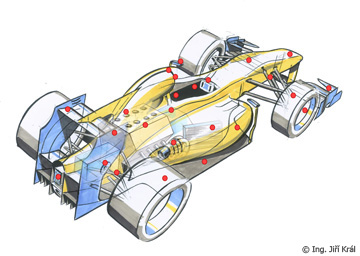Summer Stretch Starts in Spielberg Red Bull Ring Rings in Six-Race Slate of European Races
Mike Arning/HAAS F1 | 27.6.16 | Aktuality
F1 Haas
KANNAPOLIS, North Carolina (June 27, 2016) – Summer has arrived, and so too has Formula One’s stretch of European races. Six events between now and early September will take teams competing in the FIA Formula One World Championship to Austria, England, Hungary, Germany, Belgium and Italy.
The Red Bull Ring rings in this summer stretch, with the 4.326-kilometer (2.688-mile) circuit hosting this weekend’s Austrian Grand Prix. Located in Spielberg on a condensed version of the Österreichring, which held Formula One races from 1970 until 1987, the Red Bull Ring is a relatively short and compact circuit with just nine turns. Nonetheless, it covers a wide range of conditions.
The Red Bull Ring’s prime overtaking zone comes at turn two (Remus), where after heavy braking, drivers navigate the sharp corner in either first or second gear. Juxtapose that section with the high-speed turn eight (Rindt), which drivers take at sixth gear, pushing the limits of their car and their resolve. Both types of corners, and all the ones in between, require good traction, which is why Pirelli has brought its three softest tire compounds – P Zero Yellow softs, P Zero Red supersofts and P Zero Purple ultrasofts – to the Austrian Grand Prix.
Summer’s warm weather and Pirelli’s soft rubber bode well for Haas F1 Team.
The first American Formula One team in 30 years debuted in strong fashion at the season-opening and warm Australian Grand Prix when driver Romain Grosjean finished sixth to score the team’s first points, and the first points in a team’s debut race since 2002 when Mika Salo finished sixth for Toyota at the Australian Grand Prix, a span of 14 years. Grosjean proved the result was no fluke, one-upping his Australian performance by finishing fifth in the series’ next race – the Bahrain Grand Prix. More points were scored in round four at the Russian Grand Prix in Sochi when Grosjean finished eighth. Those three point-paying finishes are the most of any new team in this millennium. When Jaguar debuted in 2000 and when Toyota came on the scene in 2002, each entity managed only two point-paying finishes in their entire first seasons.
Since Sochi, however, points have been just out of reach for Haas F1 Team. A variety of factors have been at play, most notably cool temperatures affecting the team’s ability to find the proper working range of its tires. When the weather is hot and, specifically, consistently hot, getting tires up to the desired temperature and keeping them there becomes easier. This consistency is welcomed by Haas F1 Team, along with another bit of consistency this European swing provides to everyone in the paddock.
After crisscrossing the globe since mid-March, the next two months allow significantly reduced flight times and a welcome reduction in jetlag. Teams can bring all of their transporters, which bring consistent working environs for its drivers, crew members and team partners. It’s as close to normalcy as the world travelers who comprise Formula One can get.
Haas F1 Team embraces that consistency, along with the warm, consistent rays of summer. It’s a combination that can ring up another round of points at the Red Bull Ring.




